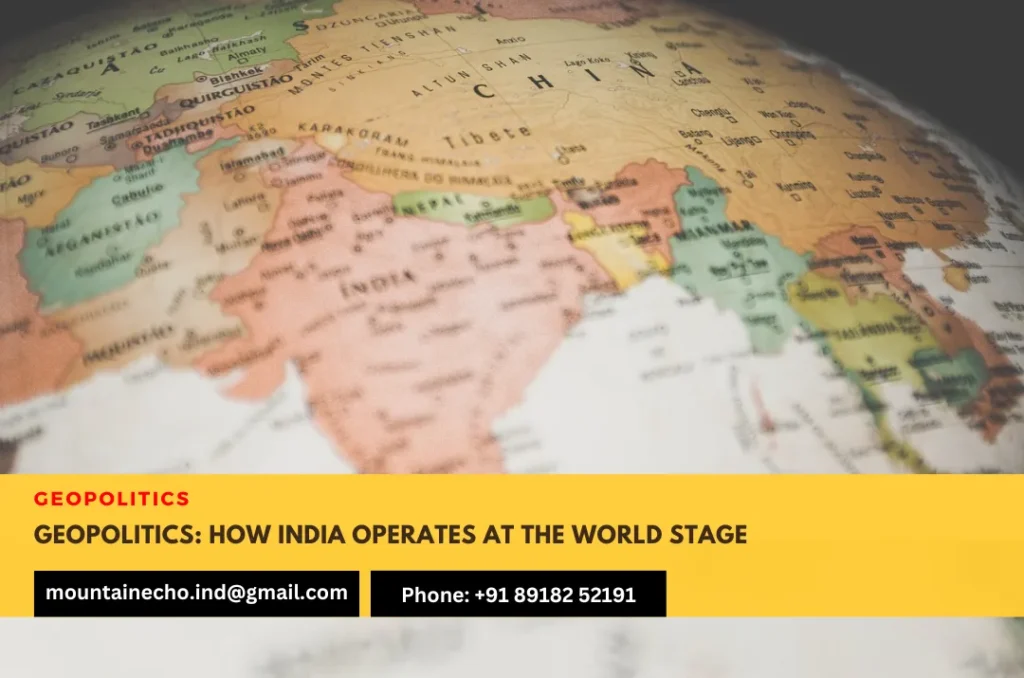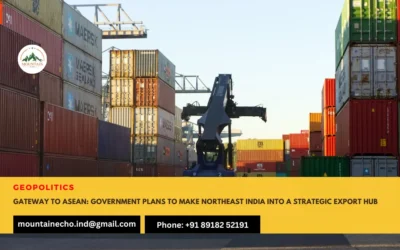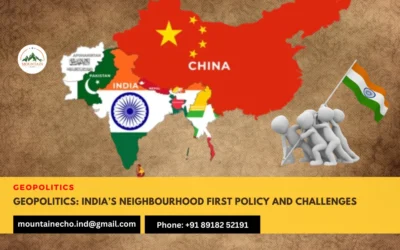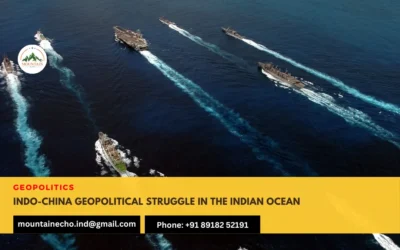Geopolitics: How India Operates at the World Stage
WhatsApp Channel
Join Now
India’s stature in global politics has grown significantly under the PM Modi’s Government, and a new assertive India has become an important stakeholder in international geopolitics.
With a growing economy, India is today attracting interest from countries worldwide looking to strengthen economic and strategic ties. It also helps that more than 65% of India’s population is below 35 years, making it one of the youngest nations and promising long-term prospects for growth and economic opportunities.
Having started late in the geopolitical race, India effectively opened up to the outside World only after 1991, after the collapse of the Soviet Union. Before its fall, Soviet Union was India’s primary defence and trading partner and the mainstay of its foreign policy.
In its early years of Independence, India did not have enough national power to influence geopolitics outside the South Asia region. It had the challenge to overcome its severe political, social and economic stress and degradation, after two centuries of British rule.
The fall of the Soviet Union, the Gulf War of 1990–91 spiked up oil prices and reduced home remittances from Indians overseas in the Middle East. At the time, India faced the prospect of defaulting on its loans and sought assistance from the World Bank and IMF.
To secure the money from IMF, India had to introduce major reforms like market deregulation, increased foreign direct investment, and liberalisation.
With the end of the Cold War era, India gradually shifted away from the Soviet influence and liberalized its economy. India had to overhaul its foreign policy altogether.
The shift in India’s Foreign policy and geopolitical interests has been most visible after Narendra Modi became the Prime Minister in 2014. India pursues its independent foreign policy and international engagement based on national interest, to expedite economic growth and expand defense capabilities.
While India is witnessing phenomenal growth in global politics, there is also a rapid rise of anti-India regimes in its neighbourhood. India has to delicately balance its global, regional, and local aspirations.
For India, its geopolitical objective is that India has to balance its security and economic alliances and groupings in the world power structure. Given India’s complex bilateral relations and history, India’s needs to address its geopolitical strategies at three different layers:
At the Global Level
At the Global level, India plays for multi-polarization of international power structure. After the post war era, World power structure was Bipolar with US and USSR vying for the maximum global influence and lasted through the Cold War period. After the collapse of the Soviet Union (USSR) in early 1990s, the US emerged as the sole superpower with US leading a Unipolar power structure.
However, after the global financial crisis in 2008, a complex multi-polarity has emerged in the international power structure with China emerging as a strong competition to the US. The rise of multiple power blocs in the form of EU, ASEAN, Russia, Japan, India, BRICS, IBSA, SCO, etc, has led to a complex world power structure.
On global issues, India has followed a non-alignment to multi-alignment with different countries on specific issues keeping India’s interest as paramount. During the early decades of independence, India adopted the policy of non-alignment and was not identified with either superpower, while aiming to get political, security and economic support from both USSR and the US camps.
India wants to maintain the status quo in international politics and to strengthen its economic and defence alliance. India also co-operates with the Anti-West block – Russia and China, under various frameworks like the BRICS and the Sanghai Cooperation (SCO). The I2U2 alliance – India, Israel, the United Arab Emirates and the United States has benefited tremendously.
For India, the next step to achieve its geopolitics objectives is to secure a permanent seat at the United National Security Council and it continues to engage with all member countries on the issue. It is continuously working towards increasing its Defence capabilities and Nuclear security and building strategic partnerships with different countries.
India is also investing in diplomatic infrastructure projects and building roads, ports, and improving connectivity and trade with the wider world.
The India-Middle East-Europe Economic Corridor (IMEC) involving Saudi Arabia, the European Union, India, UAE, France, Germany, Italy, and the United States, announced during the G20 Summit in New Delhi, is a reflects of its strategic ambitions.
Till date, India has not committed to any security alliance or signed any long-term treaties with any power bloc. India’s objective is to acquire its position as a mainstay of international system in the coming years.
At the Regional Level
At the regional level, India is striving to achieve a dominant position in the Indo-Pacific region and to display its relative presence through joining hands with the US, Japan, and other like-minded countries.
India’s objective is to increase its regional geological influence, and to counter the Chinese dominance in the region. India’s inclusion into US-led Indo-Pacific institutional architecture through forums such as the Quadrilateral Security Dialogue (Quad), is a step in the effort.
Over the years, India has built strong relationships with other Asian powers – Japan South Korea, Australia, and other South Asian countries through free trade agreements and strategic alliances. The ‘Look East’ policy which has now been re-branded as ‘Act East’ by Prime Minister Narendra Modi is with the objective to pay more attention to the security dimension of India’s presence in the Indo-Pacific. India was accepted and a full dialogue partner of ASEAN in 1995 promoting free trade and economic ties among the ASEAN countries.
Another major focus for India at the regional level is to counter the China-Pakistan axis, including the Belt and Road Initiative of China, and the promotion of Cooperation in the Indian Ocean region. Japan is one of India’s strongest ally in the South Asian security domain and maritime cooperation. Navies and security forces of the two countries work together for peace, accessibility, and stability in the Indo-Pacific region.
A major focus of India’s economic interest in the regional level is to improve its trade and bilateral relations with the Middle East, particularly Saudi Arabia. The Middle East is important to India’s economy and foreign remittance and also to secure its demand for energy and fuel.
As a whole, India aspires to become the dominant force in the geopolitics of the Indo-pacific region.
At the Local Level
At the Local level, India is the de-facto major power in consolidating its dominant position in South Asia region comprising – Nepal, Bhutan, Bangladesh, Myanmar, Afghanistan, Sri Lanka, Maldives and Mauritius.
At the local level, India directly takes on China on its land borders and in the Indian Ocean region. Having already fought a war with China in 1962, India rivalry is not limited to land border disputes, but also encompasses geopolitical issues within the Indian Ocean maritime domain.
China is India’s foremost security challenge and strongly cooperates with the US and others to counter the China-Pakistan axis. Economic integration with South Asia, apart from Pakistan, is an importance focus of India’s Neighbourhood policy.
India’s foreign policy with its South Asian neighbour’s leverages on the existing regional cooperation initiatives such as SAARC, SASEC, BBIN, and BIMSTEC. It compliments India’s Look East policy focused on Southeast Asia and Look West Policy focused on Middle East.
India is today in the midst of a major geopolitical repositioning, as it evolves from its old non-aligned approach to a multi-align approach, pursues a strong national interests-based policy and builds stronger strategic ties with a wide range of countries including Russia, United States, EU, Japan, and its allies in the region.
[The article is written by Dinesh Sharma (dineshcold@gmail.com) and first published on Sikkim Express on March 12, 2024]
Telegram Channel
Join Now



